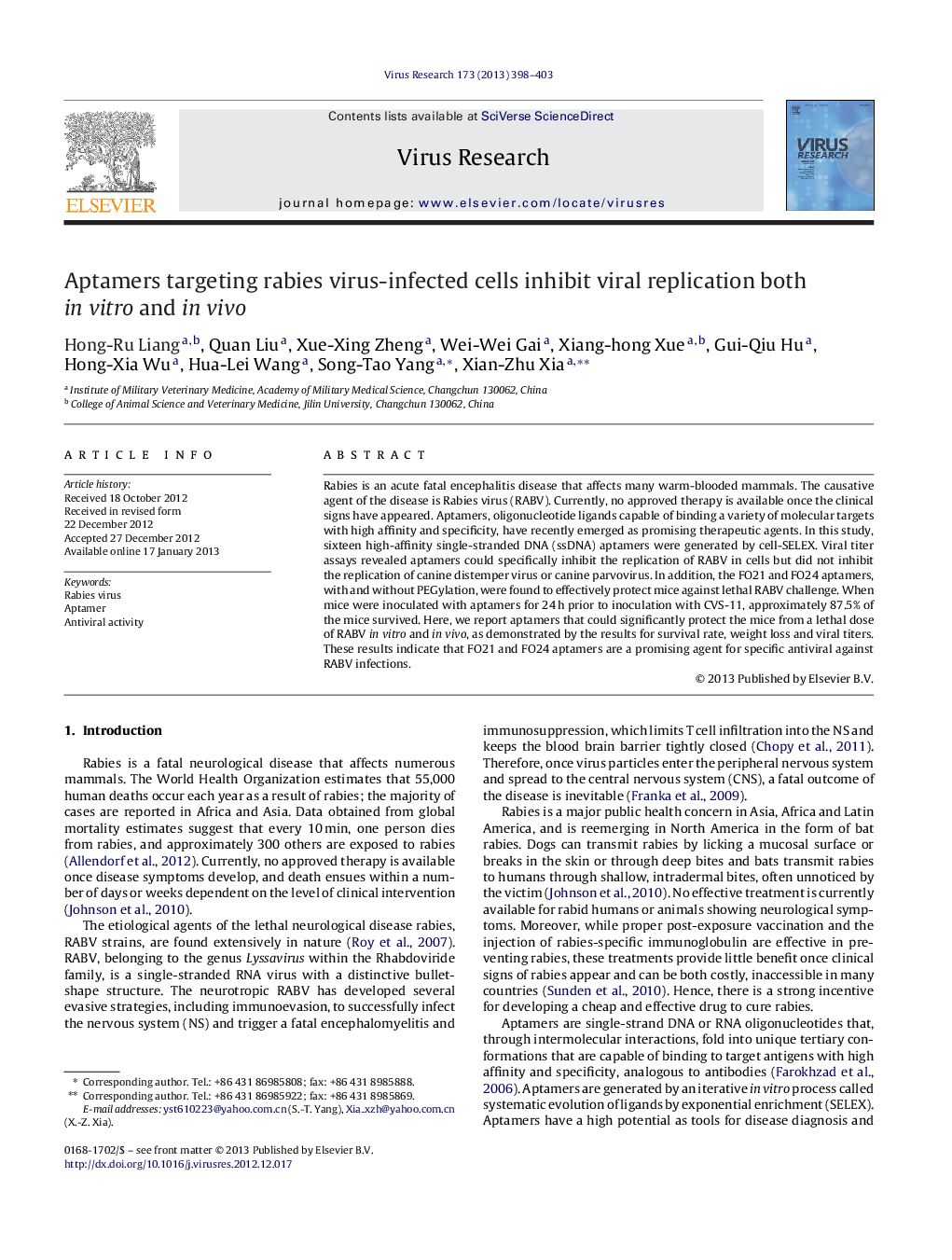| Article ID | Journal | Published Year | Pages | File Type |
|---|---|---|---|---|
| 3428700 | Virus Research | 2013 | 6 Pages |
Rabies is an acute fatal encephalitis disease that affects many warm-blooded mammals. The causative agent of the disease is Rabies virus (RABV). Currently, no approved therapy is available once the clinical signs have appeared. Aptamers, oligonucleotide ligands capable of binding a variety of molecular targets with high affinity and specificity, have recently emerged as promising therapeutic agents. In this study, sixteen high-affinity single-stranded DNA (ssDNA) aptamers were generated by cell-SELEX. Viral titer assays revealed aptamers could specifically inhibit the replication of RABV in cells but did not inhibit the replication of canine distemper virus or canine parvovirus. In addition, the FO21 and FO24 aptamers, with and without PEGylation, were found to effectively protect mice against lethal RABV challenge. When mice were inoculated with aptamers for 24 h prior to inoculation with CVS-11, approximately 87.5% of the mice survived. Here, we report aptamers that could significantly protect the mice from a lethal dose of RABV in vitro and in vivo, as demonstrated by the results for survival rate, weight loss and viral titers. These results indicate that FO21 and FO24 aptamers are a promising agent for specific antiviral against RABV infections.
► DNA aptamers targeting intact rabies virus-infected live cells were selected. ► Selected aptamers could specifically inhibit replication of rabies virus in cells. ► Aptamers could not inhibit replication of CDV and CPV in cells. ► Aptamers could inhibit viral replication in vivo. ► Aptamers have potential for use as an antiviral agent against rabies virus.
